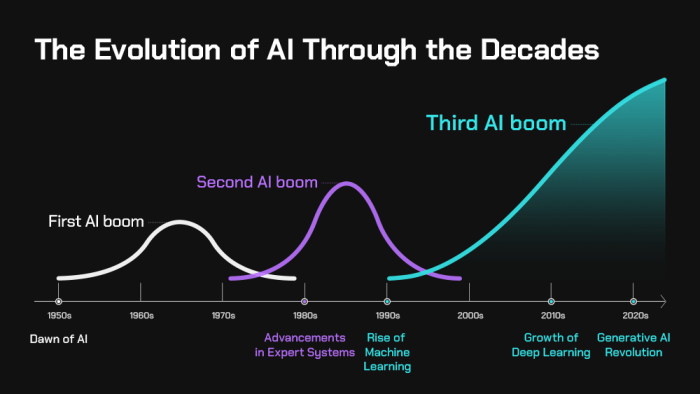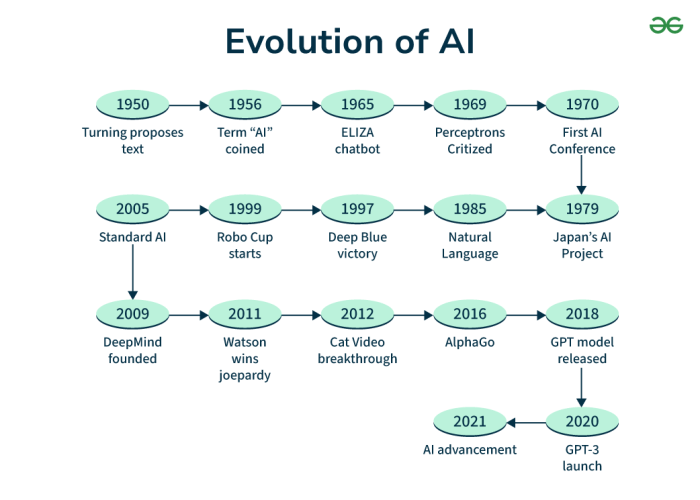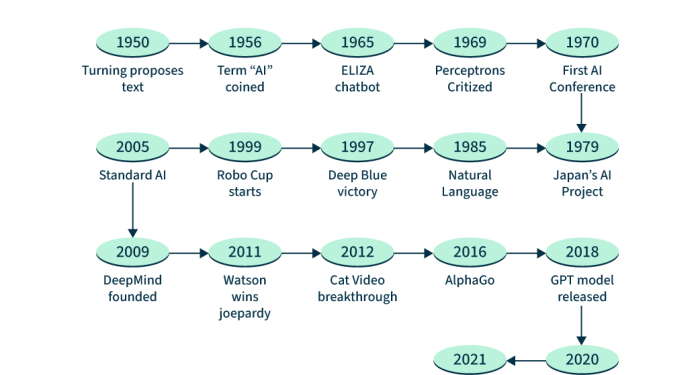Exploring the evolution of AI levels and its implications for businesses opens up a world of possibilities. Let's delve into the fascinating journey of AI development and how it impacts various industries.
Detailing the historical progression of AI and its real-world applications across different levels provides valuable insights for businesses looking to stay ahead in the technological landscape.
The Basics of AI Levels
Artificial Intelligence (AI) can be categorized into different levels based on their capabilities and complexity. These levels include Artificial Narrow Intelligence (ANI), Artificial General Intelligence (AGI), and Artificial Superintelligence (ASI).
Artificial Narrow Intelligence (ANI)
Artificial Narrow Intelligence refers to AI systems that are designed for specific tasks or functions. They excel at performing a single task efficiently but lack the ability to generalize to new tasks. ANI is the most common form of AI that we encounter in our daily lives.
Examples include virtual assistants like Siri, recommendation systems like Netflix, and autonomous vehicles.
Artificial General Intelligence (AGI)
Artificial General Intelligence represents AI systems that have the ability to understand and learn any intellectual task that a human being can. AGI possesses human-like cognitive abilities and can perform a wide range of tasks without being pre-programmed for each one.
AGI is still a theoretical concept and has not been achieved yet.
Artificial Superintelligence (ASI)
Artificial Superintelligence goes beyond human intelligence and capabilities. ASI would surpass the cognitive abilities of the smartest and most capable humans in every field, including scientific creativity, general wisdom, and social skills. ASI is a hypothetical level of AI that is yet to be realized.
The Evolution of AI Levels Over Time
The development of Artificial Intelligence (AI) has undergone significant evolution since its inception, with key milestones and breakthroughs shaping its growth over the years. Advancements in technology have played a crucial role in pushing the boundaries of AI capabilities.
Early Beginnings of AI
In the 1950s, the concept of AI was first introduced, laying the foundation for the development of intelligent machines. Researchers like Alan Turing and John McCarthy made groundbreaking contributions, setting the stage for what was to come.
Rise of Expert Systems
During the 1970s and 1980s, the focus shifted towards expert systems, which aimed to replicate human decision-making processes. This period marked a significant advancement in AI applications, particularly in areas like medicine and finance.
Machine Learning and Neural Networks
The late 20th century saw the emergence of machine learning and neural networks, enabling AI systems to learn from data and improve performance over time. This breakthrough paved the way for a new era of AI capabilities, leading to innovations like speech recognition and image classification.
Deep Learning and Big Data
In recent years, deep learning algorithms and the availability of vast amounts of data have propelled AI to new heights. Complex tasks such as natural language processing and autonomous driving have become a reality, showcasing the immense potential of AI in various industries.
Current State and Future Prospects
Today, AI continues to evolve rapidly, with ongoing research and development pushing the boundaries of what is possible. As technology advances further, we can expect AI to play an increasingly prominent role in shaping the future of businesses and society as a whole.
Implications of AI Levels for Businesses

AI technology has the potential to revolutionize the way businesses operate, offering new opportunities for increased productivity and efficiency. As AI continues to evolve across different levels, it is crucial for businesses to understand how they can leverage this technology to stay competitive in the market.
Let's explore the implications of AI levels for businesses.
Leveraging AI for Enhanced Productivity and Efficiency
Businesses can leverage AI at different levels to streamline processes, automate repetitive tasks, and make data-driven decisions. At lower AI levels, businesses can use basic AI algorithms to optimize workflows and improve operational efficiency. As AI advances to higher levels, businesses can implement more sophisticated AI systems like machine learning and deep learning to gain valuable insights, predict trends, and enhance overall productivity.
Impact on Job Roles and Workforce Dynamics
The implementation of AI across different levels can have a significant impact on job roles and workforce dynamics within organizations. While AI can automate routine tasks and improve efficiency, it may also lead to the displacement of certain jobs. Businesses need to adapt by upskilling employees to work alongside AI systems, creating new job roles that focus on managing and optimizing AI technologies.
Ethical Considerations and Challenges
Implementing AI across different levels in business operations raises ethical considerations and challenges. Businesses must ensure transparency in AI decision-making processes, address bias in AI algorithms, and prioritize data privacy and security. Additionally, ethical dilemmas may arise when using AI to make critical decisions that impact employees or customers.
It is essential for businesses to establish clear guidelines and ethical frameworks when integrating AI into their operations.
Adoption of AI Levels in Various Industries

AI adoption has been rapidly expanding across various industries, with businesses leveraging different levels of AI to enhance their operations. Let's explore some examples of industries that have successfully integrated AI at different levels and compare the benefits across sectors like healthcare, finance, manufacturing, and retail.
Healthcare
In the healthcare industry, AI is used at various levels to improve patient care, optimize treatment plans, and streamline administrative tasks. For instance, AI-powered diagnostic tools can analyze medical images and detect anomalies with high accuracy, leading to faster and more precise diagnoses.
In addition, AI chatbots are being utilized to provide personalized patient support and guidance, enhancing the overall healthcare experience.
Finance
Finance is another sector where AI is making significant strides. Banks and financial institutions are using AI algorithms to detect fraudulent activities, assess credit risks, and automate customer service. By implementing AI at different levels, financial companies can enhance security measures, improve decision-making processes, and provide more efficient services to their clients.
Manufacturing
In the manufacturing industry, AI is revolutionizing production processes by optimizing supply chain management, predicting maintenance needs, and enhancing quality control. AI-powered robots and machines are capable of performing complex tasks with precision and speed, leading to increased productivity and reduced downtime.
By adopting AI at different levels, manufacturers can achieve higher efficiency and cost savings in their operations.
Retail
Retailers are leveraging AI technology to personalize customer interactions, optimize inventory management, and forecast consumer trends. AI-powered recommendation systems analyze customer data to provide tailored product suggestions, leading to higher conversion rates and customer satisfaction. Additionally, AI-driven analytics help retailers make informed decisions about pricing strategies, marketing campaigns, and product placements, ultimately improving profitability and competitiveness in the market.Overall, the future of AI adoption across industries looks promising, with businesses expected to continue integrating AI at different levels to drive innovation, improve processes, and gain a competitive edge in the evolving market landscape.
Concluding Remarks
In conclusion, understanding the evolution of AI levels is crucial for businesses aiming to leverage the potential of artificial intelligence effectively. By staying informed and adapting to the changing landscape of AI technology, companies can position themselves for success in the digital age.
Expert Answers
How can businesses benefit from AI at different levels?
Businesses can enhance productivity and efficiency by leveraging AI at different levels to automate tasks, gain insights from data, and improve decision-making processes.
What are some ethical challenges related to implementing AI in business operations?
Ethical considerations include issues such as data privacy, algorithm bias, job displacement, and the impact on workforce dynamics within organizations.
Which industries have successfully integrated AI at different levels?
Industries such as healthcare, finance, manufacturing, and retail have embraced AI technology to streamline processes, improve customer experiences, and drive innovation.



